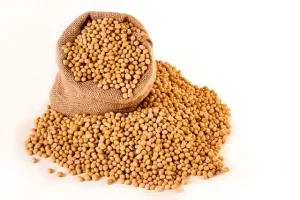Global market of ulcerative colitis may reach US$11-12 billion in 2026
- Engineered Soybeans with Pig Protein: A Promising Alternative or Pandora’s Dish?
- Severe Fever with Thrombocytopenia Syndrome (SFTS): A Tick-Borne Threat with High Mortality
- Why Isolating Bananas Extends Their Shelf Life?
- This common vitamin benefits the brain and prevents cognitive decline
- New report reveals Nestlé adding sugar to infant formula sold in poor countries
- Did Cloud Seeding Unleash a Deluge in Dubai?
Global market of ulcerative colitis may reach US$11-12 billion in 2026
- Red Yeast Rice Scare Grips Japan: Over 114 Hospitalized and 5 Deaths
- Long COVID Brain Fog: Blood-Brain Barrier Damage and Persistent Inflammation
- FDA has mandated a top-level black box warning for all marketed CAR-T therapies
- Can people with high blood pressure eat peanuts?
- What is the difference between dopamine and dobutamine?
- How long can the patient live after heart stent surgery?
Global market of ulcerative colitis may reach US$11-12 billion in 2026.
Nature predicts the global market size of ulcerative colitis: in 2026, it is estimated to reach 11-12 billion US dollars.
On November 23, Bristol-Myers Squibb (BMS) announced that the European Commission has approved a new indication for its sphingosine-1-phosphate (S1P) receptor modulator Ozamod (Zeposia): for the treatment of conventional Adult patients with moderate to severe active ulcerative colitis (UC) with insufficient response, failure, or intolerance to therapies or biological agents.
Ozamod is the first and only oral S1P receptor modulator approved for the treatment of UC in the European Union, and represents a new method for the treatment of this chronic immune-mediated disease.
UC is an inflammatory bowel disease (IBD) that affects the mucosa and submucosa of the colon and rectum, and sometimes a small section of the terminal ileum.
Severe UC features include fever, abnormal C-reactive protein and hemoglobin levels, and other symptoms of intestinal inflammation.
It is estimated that the prevalence of UC is 7 to 246 cases per 100 million people.
Complications of UC may be local, including hemorrhoids, perirectal abscess or anal fissure, and may also have extraintestinal manifestations.
In recent years, compared with traditional therapies, biological therapies that include tumor necrosis factor (TNF) antagonists and the anti-α4β7 antibody vedelizumab have improved the treatment of UC. Newer treatment options are also underway or in the late stages of development, and may prove to be more effective than existing therapies.
On November 23, an article published on Nature Reviews Drug Discovery analyzed the UC market, including current therapies in this field, emerging therapies, and market indicators.
 Source: Nature Reviews Drug Discovery
Source: Nature Reviews Drug Discovery
Current therapies
First-line treatment for mild to moderate UC includes oral aminosalicylate or controlled-release budesonide. Acute UC usually requires systemic corticosteroid therapy.
Mercaptopurine or azathioprine can be used to maintain the remission of UC, as an alternative to or in combination with TNF inhibitors, and can also be used for patients who do not respond to aminosalicylate or who need corticosteroids for a long time.
Parenteral infusion of cyclosporine can also be effective in the treatment of severe UC refractory to corticosteroids, and can delay or avoid the need for surgery.
For patients with moderate to severe UC or corticosteroid dependence, parenteral treatment regimens usually involve TNF inhibitors, including infliximab (Remicade; Janssen), adalimumab (Humira; AbbVie), or golimumab ( Simponi; Janssen).
In addition, integrin blocking therapy can also be used to treat patients with moderate or severe UC: vedelizumab (Entyvio; Takeda) is a humanized monoclonal antibody that binds to α4β7 integrin to prevent leukocytes from Intestinal migration.
Verdrizumab is used as a second-line parenteral treatment for patients with moderate to severe UC who cannot take anti-TNF drugs due to side effects, lack of efficacy, or loss of response.
Other treatment strategies for moderate to severe UC include JAK inhibitors and antibodies that recognize p40 (a subunit of IL-12 and IL-23).
Usnumab (Stelara; Janssen) is a monoclonal antibody that binds to p40, which can block cell signaling, cytokine production, and immune component gene expression.
Tofacitinib (Xeljanz; Pfizer) is an orally active non-selective JAK family kinase inhibitor, which can affect the production of several interleukins that regulate B and T lymphocytes.
These interleukins are related to mucosal inflammation.
However, in one study, compared with TNF inhibitor treatment, in elderly rheumatoid arthritis patients, tofacitinib was associated with a higher risk of serious adverse events, leading to the safety of tofacitinib and JAK inhibitors Generally questioned.
Therefore, the FDA is reviewing currently approved JAK inhibitor labels for inflammatory diseases.
The labels of approved JAK inhibitors already contain black box warnings for serious infections, malignancies, and thrombosis.
Ozamod (Zeposia; Bristol-Myers Squibb) is an S1P receptor modulator that prevents lymphocytes from appearing in the lymph nodes, thereby reducing the number of lymphocytes in chronic inflammation sites.
As mentioned at the beginning of the article, Ozamod is an oral small molecule drug that has been approved in the United States and the European Union to treat multiple sclerosis.
It was approved for marketing by the US FDA in May 2021, becoming the United States’ first An oral S1P receptor modulator for the treatment of UC.
In the Phase III True North trial, after 10 weeks of Ozamod induction therapy in patients with moderate to severe UC, the clinical remission rate was statistically significantly improved (18% vs. 6% in the placebo group).
In addition, at 52 weeks, patients receiving Ozamod maintenance therapy had significantly more clinical remissions (37%) than patients receiving placebo (19%).
Emerging Therapies
Emerging therapies for UC are usually suitable for moderate to severely active UC.
These therapies include oral small molecule drugs and injectable biologics.
Compared with current therapies, they provide new mechanisms and methods, or have better selectivity (Table 1).
Table 1 | Some drugs are being developed for ulcerative colitis Note: IL-6R=IL-6 receptor; LANCL2=LanC-likeprotein 2; S1P=sphingosine-1-phosphate; RIP1K=receptor-interactingserine/threonine-protein kinase 1 (Source: Nature Reviews Drug Discovery)
Note: IL-6R=IL-6 receptor; LANCL2=LanC-likeprotein 2; S1P=sphingosine-1-phosphate; RIP1K=receptor-interactingserine/threonine-protein kinase 1 (Source: Nature Reviews Drug Discovery)
In November 2021, the new selective JAK inhibitor fegotinib (Jyseleca; Galapagos/Gilead) was approved in the European Union for the treatment of moderate to severe UC.
Another JAK inhibitor upatinib (Rinvoq; AbbVie) is also being developed for this indication.
These two drugs are more selective for JAK1 than JAK2 and JAK3, and only inhibit certain signaling pathways.
Therefore, it is expected that their dose-related toxicity will be reduced, while the efficacy will not be reduced.
In the phase III U-ACCOMPLISH and U-ACHIEVE trials, 4% and 5% of patients in the placebo group achieved clinical remission, respectively, while 33% and 26% of the patients in the upatinib treatment group achieved clinical remission at week 8.
Clinical remission. In addition, at week 52, compared with the placebo group, the number of patients in the upatinib treatment group achieving clinical remission was significantly higher (42% in the 15 mg group, 52% in the 30 mg group vs. 12% in the placebo group).
Two other JAK family inhibitors, Pfizer’s ritlecitinib (PF-06651600) and brepocitinib (PF-06700841), have recently completed phase II development.
Ritlecitinib is an irreversible inhibitor of JAK3/TEC, while brepocitinib inhibits TYK2/JAK1.
In the Phase II VIBRATO study, at week 8, patients in the ritlecitinib (70 mg or 200 mg) group had significantly more clinical remissions than the placebo group (34%, 28.6% vs. 0%)
Etrasimod (Arena Pharmaceuticals) is a once-daily oral selective S1P receptor modulator and is undergoing phase III trials (ELEVATE UC 52 and ELEVATE UC 12) for the treatment of moderate to severely active UC.
Etrasimod is selective for S1P receptor 1 (S1PR1), S1PR4 and S1PR5, and has a short half-life, so it is expected that this therapy has fewer off-target effects than Ozamod.
Another orally active small molecule developed for UC is deucravacitinib (Bristol-Myers Squibb), which is a selective allosteric inhibitor of tyrosine kinase 2 (TYK2).
The drug’s mechanism of action is different from other JAK inhibitors. It inhibits TYK2 by binding to the regulatory domain instead of directly binding to the active site.
Allosteric TYK2 inhibition is more selective and has the potential to control the side effects usually associated with active site JAK inhibitors.
However, in the Phase II LATTICE-UC trial, deucravacitinib failed to show superiority over placebo in terms of the primary and key secondary endpoints of clinical remission at week 12.
The second phase II trial of UC is underway.
Other small orally active molecules developed for the treatment of UC include GSK2982772 from GlaxoSmithKline, which is a receptor-interacting serine/threonine protein kinase 1 (RIP1K) inhibitor.
Four drugs that specifically target IL-23 instead of sharing a subunit with IL-12 are also being developed for the treatment of UC.
These monoclonal antibodies selectively bind to the p19 subunit of IL-23, thereby inhibiting its interaction with the IL-23 receptor and the downstream signals generated thereby.
1) Rezalizumab (Skyrizi; AbbVie) has been approved for the treatment of moderate to severe plaque psoriasis, and a phase III trial of moderate to severe UC is currently underway.
2) Similarly, mirikizumab (LY3074828; Eli Lilly) for the same indication is also in the phase III development stage.
3) Gusekizumab (Tremfya; Janssen), approved for the treatment of moderate to severe plaque psoriasis in adults and active psoriatic arthritis in adults, is also undergoing a phase III trial study for the treatment of moderate to severe UC .
4) The fourth IL-23 inhibitor, AstraZeneca’s brazikumab (MEDI2070) is undergoing a phase II trial of moderate to severe active UC.
Market indicators
In 2020, the global UC drug market is valued at approximately US$7.5 billion, accounting for 10% of the entire immunology market.
The United States still occupies the main market for UC treatments, accounting for 65% of total sales (Figure 1).
In the past 4 years, the market size of the disease has a compound annual growth rate (CAGR) of 10%, mainly driven by the increase in the diagnosis rate, the introduction of new therapies, and the increase in the use of biologics in patients with moderate to severe diseases.
Adalimumab (only Humira in the U.S.) dominates the U.S. UC market with a market share of 40%, followed by vedelizumab (only Entyvio in the U.S.; 27%), and then infliximab (Remicade And its biosimilars; 18%).
 Figure 1 | The U.S. Ulcerative Colitis Market in 2020. The $5 billion sales data is broken down by drugs and targets. (Source: Nature Reviews Drug Discovery)
Figure 1 | The U.S. Ulcerative Colitis Market in 2020. The $5 billion sales data is broken down by drugs and targets. (Source: Nature Reviews Drug Discovery)
Although market analysis is confusing due to the use of these drugs in other indications, the outlook for the global UC market after 2020 is promising, with an estimated CAGR of 5–7%.
This growth is mainly driven by the introduction of several new therapies (mainly IL-23 and JAK inhibitors).
According to the current growth rate, the market size is expected to reach US$11-12 billion by 2026.
However, new therapies will be challenged by the emergence of biosimilars, as major brands including Humira, Entyvio and Remicade will lose their “exclusiveness” in the United States from 2023.
References:
1# Bristol Myers Squibb Receives European Commission Approval of Zeposia (ozanimod) for use in Adults with Moderately to Severely Active Ulcerative Colitis (Source: BMS official website)
2# The market for ulcerative colitis (Source: NatureReviews Drug Discovery)
Global market of ulcerative colitis may reach US$11-12 billion in 2026
(source:internet, reference only)
Disclaimer of medicaltrend.org
Important Note: The information provided is for informational purposes only and should not be considered as medical advice.



